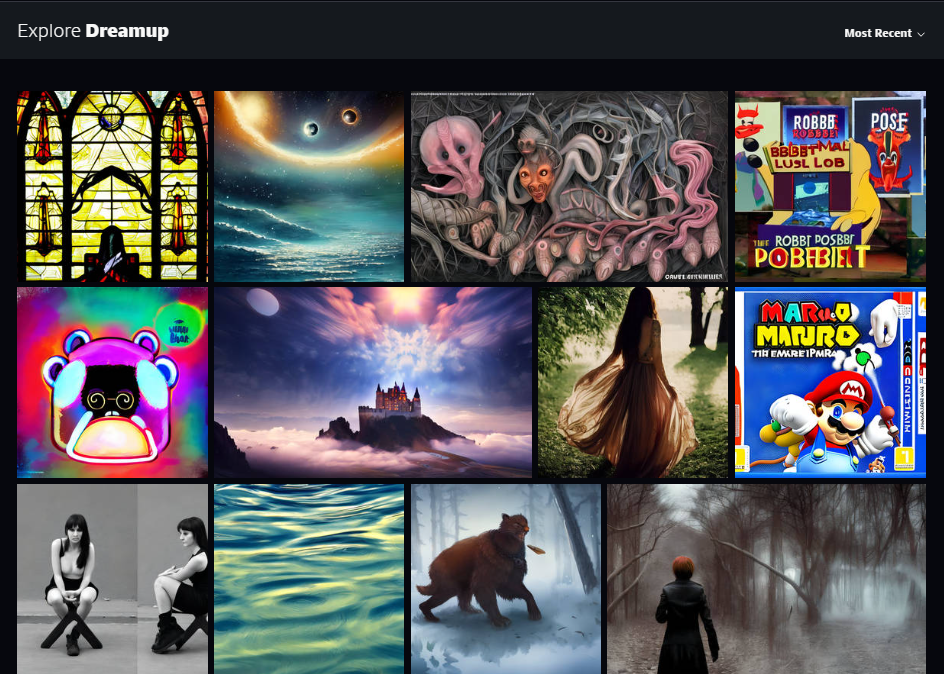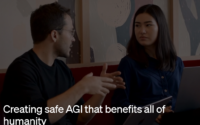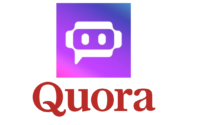Why Artists Are Mad at DeviantArt and DreamUp
On November 11, 2022, DeviantArt entered the AI controversy by announcing DreamUp, its generative AI image app. The announcement blog post details the company’s usage of Stable Diffusion and image sets obtained from LAION while laying out the economics of its prompts and points systems.
Although trying to be fun and flirty, it caused immediate backlash from the platform’s creative community, concerned about ethical and legal complications, including the unauthorized use of their artwork for machine learning. The service also required artists to manually opt-out if they didn’t want their work or style to be used, adding further to the discontent.
DA released a clarification update within hours of the initial launch. It laments how owners of platforms “like DeviantArt, Pinterest, Twitter, and more” were not adequately asked for permission to train on their datasets. It does not mention that these datasets include the same LAION datasets they implemented into DreamUp.
AI is trained on datasets that scrape user-submitted content from sites like Pinterest, Artstation and Deviantart. They will all claim that data was scraped without their permission, but the onus is on them to take action and protect their user’s content from exploitation. pic.twitter.com/pVkNmzsy3c
— WickedInsignia (@wickedinsignia) December 14, 2022
User backlash intensified because they directly admitted to using data they knew to be obtained without permission. By December, DA’s artist community joined ArtStation‘s artist community in staging a protest against exploitative AI practices.
By the next month, DeviantArt was listed alongside Stability AI and Midjourney in the class action complaint filed by artists Sarah Andersen, Kelly McKernan, and Karla Ortiz. Nothing has been mentioned about DreamUp in the media since, so we dug around to see what’s happening now that the media buzz died down.
TL;DR
- DeviantArt is a popular artist forum and social marketplace where artists can monetize their work.
- The company shifted to a default opt-out in which all deviations on its site are labeled to prevent third-party data scraping unless users manually opt in.
- Several tools online hosted on sites like GitHub and Crawlbase promise to bypass any restrictions to allow scraping of DeviantArt content anyways.
- DeviantArt is included in the list of defendants in the Artists v AI lawsuit.
- The platform continues to embrace AI, both from its DreamUp image generator and user submissions from third-party image generators.
Background
About DeviantArt
DeviantArt is an online community for artists, founded on August 7, 2000, by Angelo Sotira, Scott Jarkoff, and Matthew Stephens, among others. Originally part of the Dmusic Network, it evolved from a site for application skinning to a broader art community. The platform allows users to share various forms of art including artwork, videography, and photography and has comprehensive terms of service.
The company is based in Hollywood, Los Angeles, and had over 25 million members and 250 million submissions as of 2017. As of 2023, over 75 million registered users uploaded over 550 million images, making it one of the largest image datasets on the internet.
DeviantArt was acquired by Wix.com in 2017 for $36 million. The platform allows artists to submit work under Creative Commons licenses, and in December 2022, it became filled with “No AI” images as users protested the company’s AI partnerships.
About Stable Diffusion
Stable Diffusion is a text-to-image deep learning model released on August 22, 2022. Developed by the CompVis Group, Runway, and funded by UK-based Stability AI, led by Emad Mostaque. It’s written in Python and works on consumer hardware with at least 8GB of GPU VRAM. The most current version as of this writing is Stable Diffusion XL (SDXL), which is freely available online and can be locally installed.
The model uses latent diffusion techniques for various tasks such as inpainting, outpainting, and generating image-to-image translations based on text prompts. The architecture involves a variational autoencoder (VAE), a U-Net block, and an optional text encoder. It applies Gaussian noise to a compressed latent representation and then denoises it to generate an image. Text encoding is done through a pretrained CLIP text encoder.
Stable Diffusion was trained on the LAION-5B dataset, a publicly available dataset containing 5 billion image-text pairs. It raised $101 million in a funding round in October 2022 and is considered lightweight by 2022 standards, with 860 million parameters in the U-Net and 123 million in the text encoder.
Deviating from DeviantArt
For aspiring artists and established art organizations alike, the digital landscape serves as a crucial space for inspiration, networking, and even sales. Pew research found social media sites have an outsized importance, with 99% of arts organizations (museums, galleries, festivals, etc) using Facebook, and most being active on four platforms.
DeviantArt is amongst the plethora of platforms available for sharing work online. It’s a well-known community that, for over 20 years, offered artists a space to showcase their work, connect with like-minded individuals, and even make a profit.
How Does Selling Work on DeviantArt?
To sell on DeviantArt, you need to create an account and choose a Core membership plan. These vary in cost and benefits: Core ($3.95/month), Core+ ($7.95/month), and Core Pro ($14.95/month).
Higher tiers reduce the fee DeviantArt takes from your sales (from 12% for Core and Core+ to 2.5% for Pro+) and allow you to set higher price points ($100 max for free plans, $1000 max for Core/Core+, and $10,000 max for Pro and Pro+) and submit larger file sized up to 1 GB. They also provide more weekly fragments, which can be given to other users or used to make purchased.
Once your account is set up, you can sell both digital and print editions of your work, directly uploaded to your account for potential customers to browse and purchase.
Commissions on DeviantArt
The platform is not just a social marketplace; it’s also a great venue for landing commissions. With Core, DA takes no fees from commissions, although if you don’t pay for the monthly subscription, you’ll pay them 20%.
By adding information about your commission services in your bio or a designated section, you signal to potential customers that you’re open for commissioned work. Building a network within the community is crucial for this aspect of your artistic career.
Pricing is one of the trickiest parts of selling art. To set a fair rate, consider the time invested in creating a piece and how much you’d like to earn per hour. This should never fall below the minimum wage. Also, as your skills and reputation grow, feel free to increase your rates.
Is DeviantArt Still Relevant?
While DeviantArt was once a go-to platform, the rise of other marketplaces and social media platforms diversified opportunities for artists. Facebook and Twitter remain the most popular social marketplaces for artists, and visual platforms like TikTok, Instagram, YouTube, and Pinterest are not far behind.
In addition, artists often rely on platforms like Patreon, Kofi, and inPRNT to promote and sell their artworks. Despite this, DeviantArt still holds value, especially for artists whose work aligns with the site’s more popular genres, like anime drawings.
But it’s impossible to exist on the platform without understanding how it can impact your work by exposing it to Ai data scraping.
The increasing presence of AI-generated art on platforms like DeviantArt is concerning to many artists. They argue that the influx diminishes the visibility of human-created art, which in turn impacts potential clientele and income. There is also concern about how the AI art is created—by feeding algorithms with existing works from real artists, often without consent, potentially infringing on copyrights.
The call from artists in 2022 was for DeviantArt and similar platforms to take action to either regulate or separate AI-generated works from those created by human artists to protect the interests of the latter.
However, it’s clear a year later that DA’s mostly teenaged audience did not have the power to enact any change on the platform, as DreamUp is still active as of this writing. Although it doesn’t seem as popular as DA would’ve liked.
Putting Down DreamUp

The best way to understand how DeviantArt’s community feels about the launch of DreamUp is to read the self-hosted journals posted by its users. This one, for instance, waffles back and forth and the subject.
The journal discusses the ethical and legal challenges surrounding AI’s use of artwork for machine learning, particularly focusing on DeviantArt’s DreamUp feature. It points out that current laws are insufficient to protect artists’ rights and that DeviantArt’s ethical tags and username opt-out options, while not legally binding, are steps toward giving artists some control over how their work is used in AI training.
Of course, we know that these steps are easily bypassed. Several tools online hosted on sites like GitHub and Crawlbase promise to bypass any restrictions to allow scraping of DA content anyways.
Also, DeviantArt CEO Moti Levy said in a public statement last November that they do not plan to do any training on DA’s archive of user content. This doesn’t negate that the company admitted itself that its site content is included in the LAION datasets used to train Stable Diffusion, which is what’s running under the hood of DreamUp.
This means that while DA is not doing any training, they have not taken any legal action against LAION nor Stability AI for using the user-generated content on their platform for training. The tenets of consent, compensation, and credit have not been followed, and this leaves users seeking viable alternatives.
Alternatives to DeviantArt
While DeviantArt is a solid starting point, it serves as a reminder not to limit yourself to a single platform.
Artnet and Society6 are recommended options from art bloggers online, each with their unique features and target audiences. Artnet is said to be particularly strong for artists looking to reach a broader market, while Society6 allows for print-on-demand services.
However, these marketplaces can also be filled to the brim with AI-generated images, and it’s not always clear what their stance is on AI data scraping and model training. Society6 does not mention AI anywhere in its community guidelines. We are also unable to find any specific clauses within Artnet’s Seller Agreement nor its Auction Terms of Use and Subscription Agreement.
Without a direct prohibition, the door is open for users to flood these sites with synthetic media.
Cara is a rising star in the human artist community as well, and the artists we talked to recommend that over any other platform at the moment. It has some work to do to become as functional as DeviantArt and ArtStation, but its anti-AI stance attracted a lot of artists fleeing from the pro-AI platforms to protect their work. Don’t trust any platform fully however–you’ll need to Glaze your own images to protect them from data scraping methods.
The Big Picture
DeviantArt was once a useful platform for budding artists, particularly those whose work aligns with its more niche categories. However, expanding to multiple platforms will likely yield greater success and protection in the modern age of AI data scraping.
The art world moved far beyond traditional galleries and studios, and taking advantage of digital platforms can be a game-changer in your artistic career. But uploading images to these sites remains a risky business so long as we don’t have clear and transparent guidelines on what they’re being used for.



